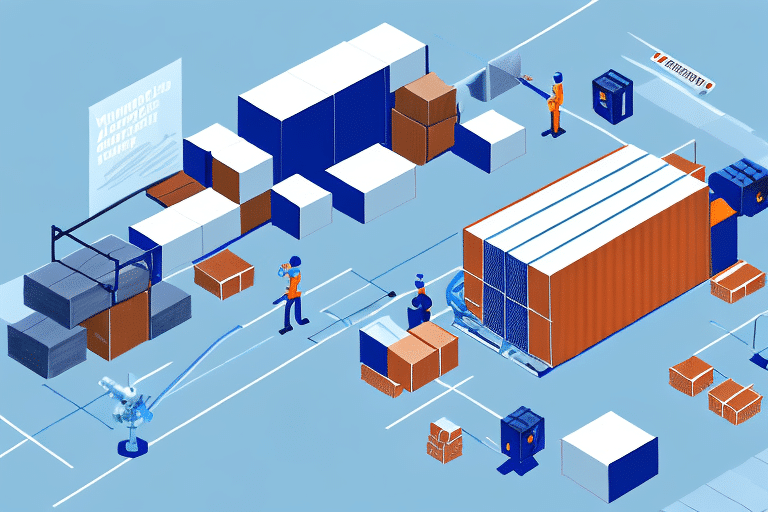Benefits of Integrating DHL eCommerce with Oracle Warehouse Management Cloud
Integrating DHL eCommerce with Oracle Warehouse Management Cloud offers numerous advantages for businesses aiming to enhance their supply chain operations. This integration facilitates streamlined processes, cost reductions, and improved customer satisfaction.
Seamless Communication and Real-time Data Transmission
The integration ensures that data flows smoothly between DHL eCommerce and Oracle Warehouse Management Cloud in real-time. This seamless communication enables automatic updates on inventory levels, order statuses, and shipment tracking, reducing the need for manual data entry and minimizing errors.
Enhanced Accuracy and Efficiency
Automated workflows reduce the risk of human error, particularly in inventory management and order fulfillment. Businesses can maintain accurate stock levels, decrease order processing times, and improve overall operational efficiency. According to a McKinsey report, companies that implement automated supply chain processes can see efficiency gains of up to 20%.
Improved Customer Experience
With DHL eCommerce's extensive global network, businesses can offer customers a variety of shipping options, including faster delivery times and competitive rates. Enhanced order tracking and timely deliveries contribute to higher customer satisfaction and loyalty.
Connecting DHL eCommerce with Oracle Warehouse Management Cloud: A Step-by-Step Guide
Setting up the integration between DHL eCommerce and Oracle Warehouse Management Cloud involves several key steps. Here’s a comprehensive guide to help you through the process:
- Activate Your Accounts: Ensure you have active accounts with both DHL eCommerce and Oracle Warehouse Management Cloud.
- Access API Documentation: Visit the official Oracle documentation for API integration guidelines.
- Create the Integration: Utilize the API endpoints provided to establish a connection between the two platforms.
- Customize Integration Settings: Tailor the integration to fit your business requirements, such as workflow preferences and inventory parameters.
- Conduct Testing: Rigorously test the integration to ensure data is transmitted accurately and processes are functioning correctly.
- Deploy the Integration: Once testing is successful, implement the integration across your business operations.
Optimizing and Managing the Integration
After establishing the integration, it's crucial to optimize and manage it effectively to maximize benefits:
Workflow Optimization
Regularly assess and refine your workflows to align with evolving business needs. Optimized workflows can lead to significant time and cost savings.
Performance Monitoring
Track key performance indicators (KPIs) such as order fulfillment rates and inventory accuracy. Tools like Tableau can help visualize and analyze these metrics.
Staff Training and Support
Ensure that your team is well-trained on using the integrated system. Ongoing training and support are essential for maintaining efficiency and addressing any issues that arise.
Performance Metrics and Analytics
Leveraging performance metrics and analytics is vital for continuous improvement:
Key Performance Indicators (KPIs)
- Order Fulfillment Rates: Measure the percentage of orders processed and shipped on time.
- Inventory Accuracy: Assess the precision of inventory records compared to actual stock levels.
- Shipping Costs: Analyze shipping expenses to identify opportunities for cost reduction.
- Customer Satisfaction: Use surveys and feedback to gauge customer experiences and identify areas for improvement.
Data-Driven Decision Making
Utilize analytics tools to interpret data and make informed decisions. Insights gained can help optimize supply chain operations, improve inventory management, and enhance overall business strategy.
Troubleshooting and Best Practices
Despite the robust integration, challenges may arise. Here are some common issues and best practices to address them:
Common Issues
- Data Transmission Errors: Verify API configurations and ensure data formats are correct.
- Inventory Discrepancies: Conduct regular cycle counts to maintain accuracy.
- Shipping Delays: Collaborate with DHL eCommerce to identify and resolve the root causes of delays.
Best Practices
- Regular Audits: Perform periodic audits of your integrated systems to ensure they function correctly.
- Continuous Improvement: Stay updated with the latest features and updates from both DHL eCommerce and Oracle to leverage new capabilities.
- Vendor Collaboration: Maintain open communication with DHL and Oracle support teams to quickly address and resolve any integration issues.
Future-proofing and Scaling Your Supply Chain
As your business grows, your supply chain needs will evolve. Integrating DHL eCommerce with Oracle Warehouse Management Cloud can help future-proof your operations:
Scalability
The integrated platforms are designed to handle increasing volumes of data and transactions, allowing your supply chain to scale seamlessly as your business expands.
Advanced Automation
Implement advanced automation features to reduce manual interventions, increase speed, and enhance accuracy in your supply chain processes.
Sustainability Initiatives
Leverage the integration to implement sustainable practices, such as optimizing shipping routes to reduce carbon emissions and minimizing waste in inventory management.
Enhancing Customer Experience through Seamless Order Fulfillment
The ultimate goal of integrating DHL eCommerce with Oracle Warehouse Management Cloud is to elevate the customer experience:
Efficient Order Processing
Automated workflows ensure that orders are processed swiftly and accurately, reducing shipping times and enhancing reliability.
Transparent Tracking
Provide customers with real-time tracking information, allowing them to monitor their orders from placement to delivery.
Responsive Support
Implement automated notifications and proactive support mechanisms to address customer inquiries and issues promptly.
Conclusion
Integrating DHL eCommerce with Oracle Warehouse Management Cloud is a strategic move that can significantly enhance your supply chain operations. By streamlining processes, improving accuracy, and elevating the customer experience, this integration offers tangible benefits that can drive business growth. To maximize these advantages, it's essential to follow best practices, continuously monitor performance, and remain adaptable to future advancements in supply chain technology.






















